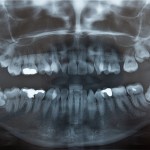
Third molar surgery is one of the most commonly performed surgical procedures pain and swelling are common post-operative sequelae. Piezoelectric surgery was introduced in 1988 and has been suggested as an alternative to the use of rotary instruments for third molar extraction.
The aim of this review was to identify any significant differences in clinical outcomes between piezoelectric surgery and surgery performed with traditional rotary instruments for the extraction of lower third molars.
Methods
Searches were conducted in the PubMed/Medline and Cochrane CENTRAL databases together with the databases of the individual Journal of Oral and Maxillofacial Surgery, International Journal of Oral and Maxillofacial Surgery, Journal of Oral Surgery, and British Journal of Oral and Maxillofacial Surgery.
Randomised controlled trials (RCTs), controlled clinical trials (CCTs), and retrospective studies comparing clinical outcomes between piezoelectric surgery and the conventional rotary osteotomy technique in the surgical extraction of third molars published in English were considered.
Study quality was assess independently by two reviewers using a rating scheme based on the Meta-analysis of Observational Studies in Epidemiology (MOOSE) statement, the Strengthening the Reporting of Observational Studies in Epidemiology (STROBE) statement, and the Preferred Reporting Items for Systematic Reviews and Meta-Analyses (PRISMA) statement. Postoperative sequelae (oedema, trismus, and pain), the total number of analgesics taken, and the duration of surgery were analyzed
Results
- 9 studies (6 RCTs, 2 CCTs and 1 retrospective) were included.
- A total of 424 patients (682 third molars) were enrolled across 9 studies.
- Prophylactic antibiotics were administered in 6 studies
- 8 studies reported type of incision.
- No corticosteroids were administered in any study.
- 6 studies were considered to have a low risk of bias, 3 a moderate risk.
- Meta-analysis (8 studies) showed a significant advantage for the piezoelectric surgery group regarding the amount of postoperative facial swelling. Standardised Mean Difference (SMD) = -1.27 (95%CI; -1.92 to -0.61) P = 0.0001; I2 = 97%.
- Meta-analysis (4 studies) found a statistically significant advantage of piezoelectric surgery over conventional rotary surgery for maximum mouth opening following the extraction of third molars. Mean difference (MD) = 0.37 (95% CI; 0.18–0.55) P = 0.0001; I2 = 73%.
- Meta-analysis (6 studies) found a significant reduction in pain when using the piezoelectric surgical technique SMD = 0.33 (95% CI; 0.45 to 0.21) P < 0.00001; I2 = 80%.
- Meta-analysis (3 studies) found a significant reduction in total number of analgesics taken by patients when the piezoelectric surgical technique was used SMD = 2.46 (95% CI 3.68 to 1.24) P < 0.0001; I2 = 82%.
- Meta-analysis (9 studies) demonstrated a significant increase in surgery duration in the piezoelectric group SMD = 0.46 (95% CI; 0.33– 0.58) P < 0.00001; I2 = 0%.
Conclusions
The authors concluded:
The results of the meta-analysis showed that piezoelectric surgery significantly reduced the occurrence of postoperative sequelae (oedema, trismus, and pain) and the total number of analgesics taken compared to the conventional rotary instrument technique in lower third molar surgery, but required a longer surgery time.
Comments
The authors of this review have conducted a broad search for studies to address their questions. However they have decided to include only studies published in English which risk excluded relevant studies that could impact on their findings. The have also chosen to include a range of studies designs including them all together in their meta-analysis. They also appear to have included multiple observations points from the same studies in their meta-analysis. The meta-analysis also suggested significant heterogeneity for the majority of outcomes considered. As a majority of the identified studies were RCTs it would have been more useful to have just included these in their analyses, as they are less prone to bias. This would also have enabled them to use the well-known Cochrane Risk of bias tool to assess quality rather than the composite model adopted. Because of this qualifications the results of this meta-analysis should be interpreted with caution.
Links
Primary paper
Al-Moraissi EA, Elmansi YA, Al-Sharaee YA, Alrmali AE, Alkhutari AS. Does the piezoelectric surgical technique produce fewer postoperative sequelae after lower third molar surgery than conventional rotary instruments? A systematic review and meta analysis. Int J Oral Maxillofac Surg. 2015 Nov 10. pii: S0901-5027(15)01366-1. doi: 10.1016/j.ijom.2015.10.005. [Epub ahead of print] Review. PubMed PMID: 26572830.

Piezoelectric surgery for third molar removal? https://t.co/36t60VfEgG
Review suggests better outcomes with piezoelectric surgery for third molar removal https://t.co/36t60VfEgG
Less swelling after third molar surgery with piezoelectric surgery? https://t.co/36t60VfEgG
Fewer analgesics used after third molar surgery with piezoelectric surgery? https://t.co/36t60VfEgG
Don’t miss – Third molar removal – does piezoelectric surgery improve outcomes? https://t.co/36t60VfEgG